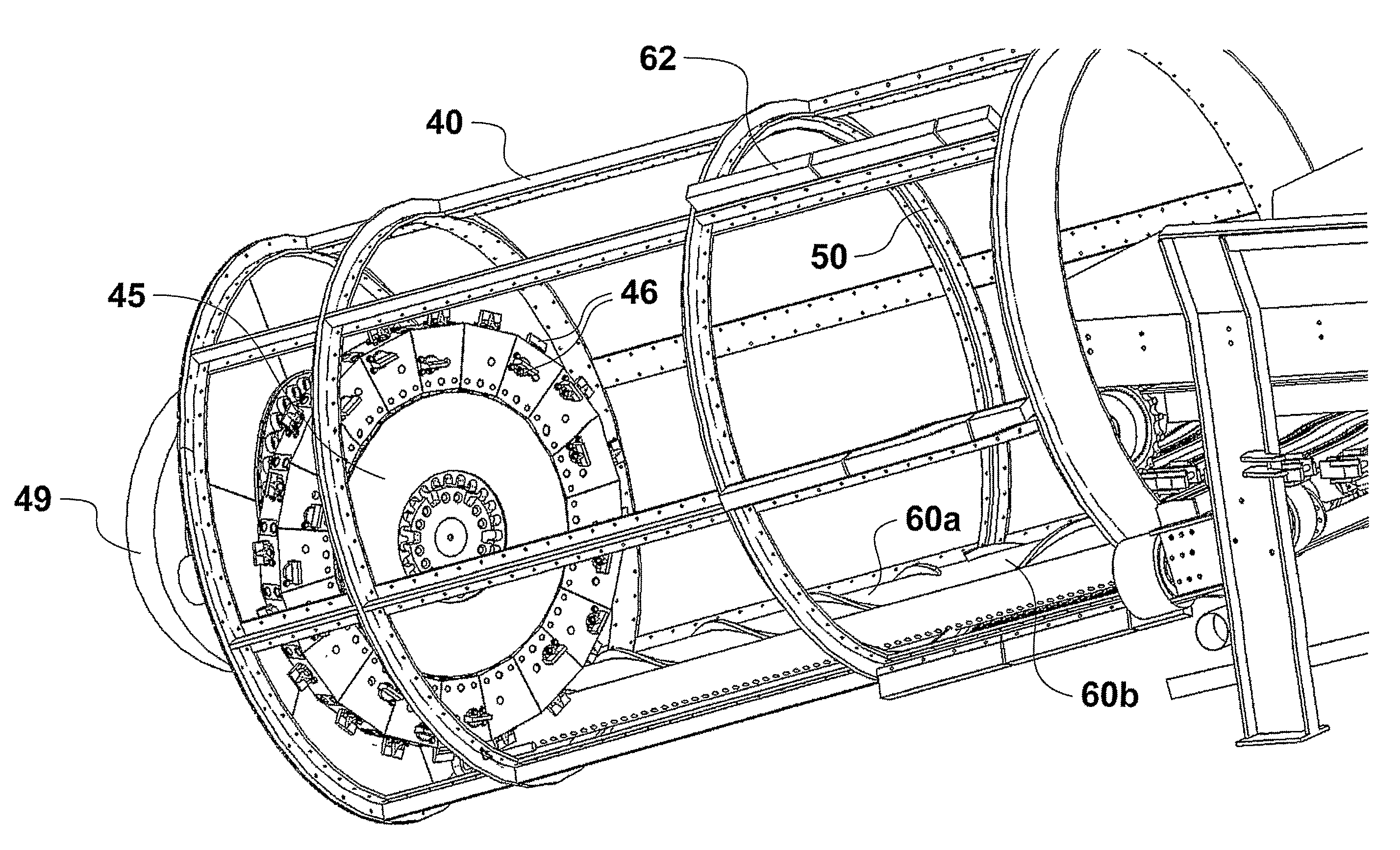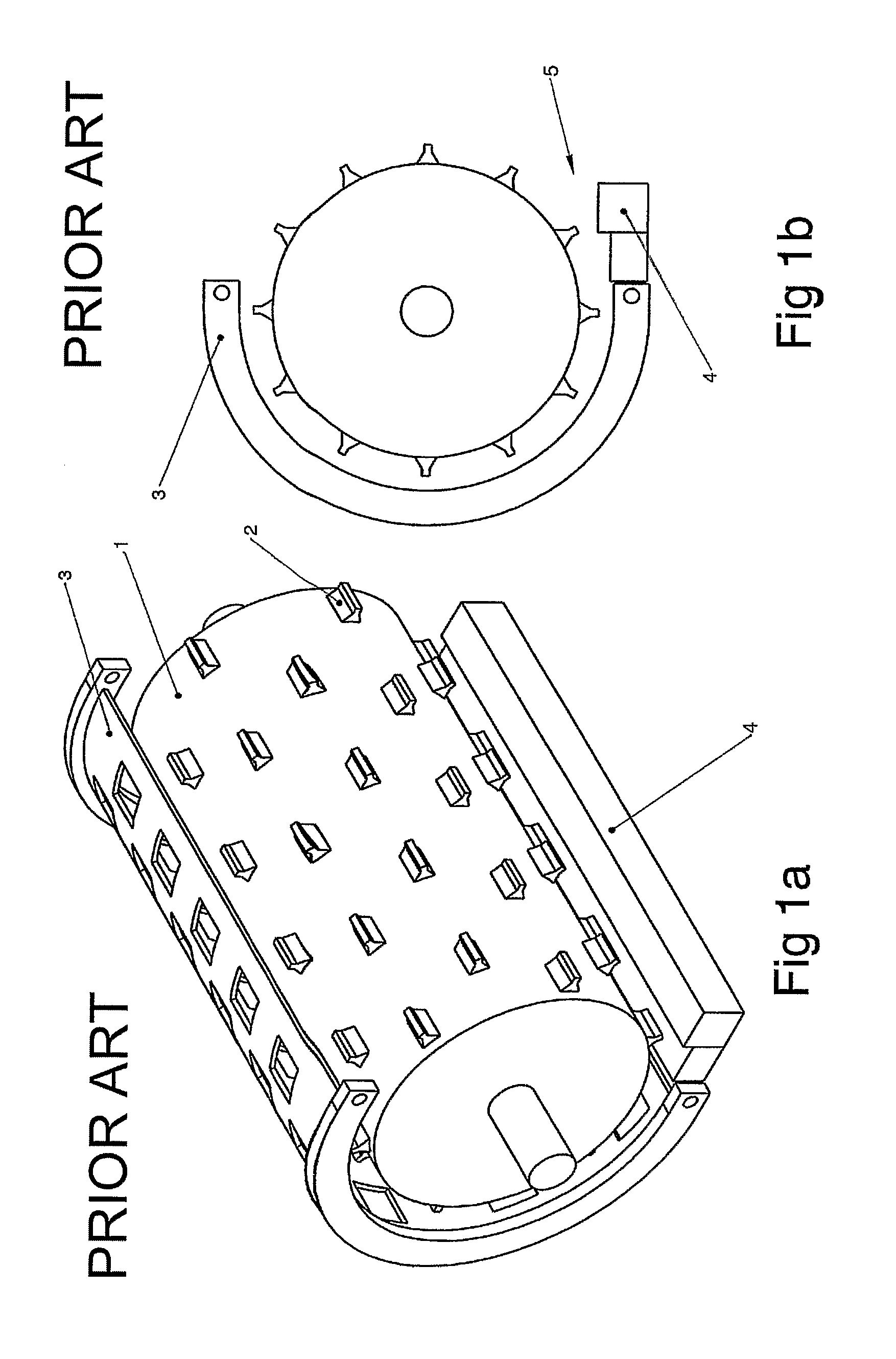Wood hogging apparatus
a technology of hogging apparatus and wood, which is applied in the field of hogging apparatus, can solve the problems of high energy consumption, affecting the efficiency of hogging apparatus, affecting the safety or ability to process a wide range of materials, and achieving the effect of avoiding damag
- Summary
- Abstract
- Description
- Claims
- Application Information
AI Technical Summary
Benefits of technology
Problems solved by technology
Method used
Image
Examples
Embodiment Construction
[0110]With reference to the drawings and by way of example only there is provided hogger apparatus such is best illustrated in FIG. 4. The hogger apparatus comprises a drum, (40) which comprises a structural metal frame overlaid with a metal grate panels (41). For simplicity of viewing, the grate (41) is not shown in all of the figures. The grate is typically of a steel though other suitable materials can be substituted. The panels may be removable for repair and access to internal components of the apparatus.
[0111]FIG. 5 illustrates hogger apparatus (generally indicated by section 42) as part of mobile apparatus including feed and removal means (to be discussed more fully later).
[0112]In FIG. 5 the inclination of the drum (40), from the horizontal, is shown. In this figure bulk material is fed from the right hand side into the apparatus.
[0113]Positioned at the lower end of the drum, and on the inside, is a rotating disc assembly (45) with a plurality of teeth (46) about its periphe...
PUM
| Property | Measurement | Unit |
|---|---|---|
| height | aaaaa | aaaaa |
| height | aaaaa | aaaaa |
| angle | aaaaa | aaaaa |
Abstract
Description
Claims
Application Information
 Login to View More
Login to View More - R&D
- Intellectual Property
- Life Sciences
- Materials
- Tech Scout
- Unparalleled Data Quality
- Higher Quality Content
- 60% Fewer Hallucinations
Browse by: Latest US Patents, China's latest patents, Technical Efficacy Thesaurus, Application Domain, Technology Topic, Popular Technical Reports.
© 2025 PatSnap. All rights reserved.Legal|Privacy policy|Modern Slavery Act Transparency Statement|Sitemap|About US| Contact US: help@patsnap.com



